Left to right: Measure A proponents Mark Thurmond and Elizabeth Watson; Humboldt County Growers Alliance Executive Director Natalynne DeLapp (at the lectern) and Humboldt County Planning Commissioner Noah Levy. | Photos by Ryan Burns.
###
Proponents and opponents of Measure A, the countywide ballot initiative that would dramatically reshape local cannabis regulations, squared off this afternoon during a 90-minute presentation/debate hosted by the Humboldt Emeritus and Retired Faculty and Staff Association (ERFSA) at Arcata’s Baywood Golf and Country Club.
By now the positions between the pro and con camps are well-established, though this was the first time key players have had the chance to exchange arguments in person before a crowd of onlookers. The format provided a few sparks, including an expletive-laden interjection from one angry audience member, along with some thoughtful Q-and-A.
The creators and backers of Measure A, also known as the Humboldt Cannabis Reform Initiative, say that the amendments it would add to the county’s General Plan are necessary to prevent an increasingly industrialized cannabis industry from running amok at the expense of the environment and rural residents. They were represented today by the initiative’s cosponsors, Mark Thurmond and Elizabeth “Betsy” Watson.
Opponents, including numerous cannabis business owners, some chambers of commerce and Second District Supervisor Michelle Bushnell, say organizers misled people into signing the initiative and that the stringent and rigid regulations it would enshrine would actually harm, not protect, small growers. This camp was represented today by Humboldt County Growers Alliance Executive Director Natalynne DeLapp and, somewhat surprisingly, Humboldt County Planning Commissioner Noah Levy.
The four primary participants took turns speaking before a crowd of roughly 50 people, including members of ERFSA as well as folks from the cannabis industry, who dined at round tables as rain sprinkled on the golf course outside the large picture windows.
Speaking first, DeLapp said she wasn’t there to defend the cannabis industry but rather to explain why Measure A would harm Humboldt County through bad governance.
“There is a right way to accomplish your goals in a civil society: with public process, expert input, compromise among stakeholders and sincere participation,” DeLapp said. In contrast, she said, the backers of Measure A avoided public process, wrote their initiative quickly and then submitted it to the county Elections Office without any public review.
DeLapp also argued that California’s initiative process is “a terrible way to handle complex land use and environmental issues” because, by law, the rules it would create could not be amended, replaced or altered in any way except through another voter-approved initiative.
“For Measure A, the technical details are poorly written, the legal ramifications of its language are unclear and its impact on the environment, public safety and our local government are all serious concerns held by policymakers, farmers and regulators alike,” DeLapp said.
Last month, the Humboldt County Growers Alliance joined with seven local cannabis farmers to file a lawsuit against Measure A proponents, arguing that they “intentionally misled” and “deceived” members of the public while gathering signatures to place the initiative on the March 2024 ballot.
Today, DeLapp reiterated those arguments and said that Measure A would have unintended negative repercussions.
“The backers appear resistant to understanding that their initiative is not only impractical but also carries consequences that run counter to their interests,” she said. If passed, she continued, the measure would “upset a carefully designed, tested system of checks and balances that continues to evolve in a public, democratic process.”
DeLapp went on to say that the initiative would harm the very growers is claims to want to protect.
“You will not hear from the proponents about the small legal farmers who support this initiative, because there aren’t any,” DeLapp said, adding, “and if I’m wrong, I will eat my notes.”
Using some prepared PowerPoint slides as she dove into the details, DeLapp said Measure A would override more than 160 pages of existing cannabis rules, and that its novel definition of “expansion” would prevent legal farmers from making environmentally responsible additions such as employee housing, drying barns or ground-mounted water and solar systems.
Wrapping up, DeLapp said many of the premises upon which Measure A are founded are false — not least of which being the specter of a Green Rush of industrial-scale cannabis growers when, in fact, there is a “green exodus, as evidenced by the state of southern Humboldt County’s economy and boarded-up shops.”
Levy spoke to his experiences as a member of the Planning Commission, saying that the allegation from Measure A proponents that there has been a lack of coordination between the county and state resource agencies is “simply not true.”
“We had an extraordinary degree of interaction and consultation with all of the state agencies that were relevant in drafting these ordinances and revising the ordinance a couple of years later,” Levy said.
He also noted that every permit that comes through the Planning and Building Department requires permits from state agencies, such as the Department of Fish and Wildlife, the State Water Resources Control Board, the Regional Water Quality Board and CalFire.
“Basically without exception, every request made by any of those agencies gets written into the permit as a condition of approval,” Levy said.
Regarding water usage, Levy said cannabis is subjected to “the most stringent water protection of any agricultural crop in the state,” and in Humboldt County, the Planning Commission went above and beyond those rules “to require hydrogeological analysis of anyone relying on a well to confirm that they’re not going to be depleting the aquifers that may serve other wells for nearby surface waters, and incentivizing or requiring extra storage and the transition to rainwater catchment.”
Levy handed the cordless microphone back to DeLapp, who urged people to vote “no” on Measure A.
“If we have to take this all the way to March, we will,” she said, “and we are confident that the public will see this initiative for what it is: a broken policy that is bad for Humboldt.”
While DeLapp often referred to printed-out pages of prepared remarks, Watson and Thurmond — both retired college professors — elected to address the audience extemporaneously.
Watson said that she and other organizers of the Humboldt Cannabis Reform Initiative did attempt to get their grievances addressed through direct appeals to local officials.
“The response that we got from local government led us to believe that an initiative would be the way to go,” Watson said.
She argued that Measure A is not anti-cannabis but rather anti-industrialization of the region’s agricultural and timber production zones. Cannabis farms were approved in areas that are “inappropriate for this kind of crop,” she said, and she acknowledged that the group’s political efforts began with a neighborhood dispute in Kneeland.
Watson said that the language of Measure A is built upon the county’s own Commercial Cannabis Land Use Ordinance, aka ordinance 2.0. In fact, she said, Measure A “is essentially 2.0 with teeth.”
Thurmond said the initiative was borne out of Kneeland neighbors’ frustrations with getting problems properly addressed by county officials, whether the issue was a farmer dumping wastewater into Freshwater Creek or complaints about traffic and dangerous driving. He also voiced frustration with the fact that he and other neighbors weren’t notified about any pending grow operations that were smaller than 10,000 square feet.
From there, he said, organizers talked with people in the county Planning and Building Department as well as county supervisors.
“For the most part, we got sort of a blank response,” Thurmond said.
He argued that the provisions of the California Environmental Quality Act have not been followed because the public hasn’t been informed about how specific mitigation measures will be enforced, nor is water independently monitored and reported for each cultivation operation.
Thurmond went on to say that county officials have failed to follow through on a promise to hold annual public hearings regarding water usage and its impacts to each watershed in the region, and he defended the voter initiative process as an expression of backers’ First Amendment right to redress grievances.
“And the more I looked into this, the more I realized that we have an awful lot of failure to communicate with the rural environment,” Thurmond said.
He was in the midst of making an allegation that cattle farmers who complain about cannabis grows “might have some problems with their livestock disappearing” when a voice from the back of the room interrupted him.
“What are you fucking talking about? … That’s bullshit,” said the man, who was later identified as Matt Kurth, founder and owner of Humboldt Cannabis Tours.
“You’re full of shit. You’re a fucking liar, dude,” Kurth continued. As attendees instructed him to stop, Kurth walked out of the room toward the exit, but not before adding, “You guys are being lied to.”
After the outburst, Thurmond insisted that he was being truthful.
“I got a lot of people who did not want to sign the initiative because they were afraid somebody would find out and their livestock would be hurt or their tires would be slashed — that’s an honest statement,” Thurmond said.
The proceedings remained calm after that, with Thurmond describing proponents’ signature-gathering efforts and petition-drafting process as “a perfectly valid public process.”
He explained that the initiative would limit the number and types of cannabis operations allowed in the future while giving neighbors the chance to “learn about these applications before they move in.” New grows would be limited to no more than 10,000 square feet while expansions would be limited to outdoor-only growing. Also, anyone with an existing cannabis cultivation permit would not be allowed to acquire another.
Thurmond also said that Measure A would improve enforcement by requiring annual in-person inspections on all grows, with less than 24 hours notice. And public hearings would be required before the county could approve any grow operation larger than 3,000 square feet. Thurmond said that, contrary to claims by opponents, Measure A would actually encourage people to add water storage and solar panels, and he said the county’s interpretation of the specific provisions would be guided by the measure’s express statements of purpose.
During the Q-and-A period, Gordon Clatworthy, a candidate challenging incumbent Rex Bohn for the First District seat on the Humboldt County Board of Supervisors, asked if it would be fair to say that Measure A came about because organizers “didn’t get anywhere” going through the board.
When the mic was finally passed back to Watson she replied, “Yes.”
The Outpost asked about proponents’ efforts to engage with the Board of Supervisors and other county officials in the months and weeks after they submitted the necessary signatures required to get the measure qualified for the March ballot.
Watson said that county officials were slow to engage with them, and when they finally did so it was not productive. Supervisor Bushnell and Fourth District Supervisor Natalie Arroyo, who comprise an ad hoc committee to work with Measure A’s backers, participated in four meetings.
“Basically, what they asked us in the first meeting [was], would we remove it?” Watson said. “Well, the obvious answer is, ‘No, we’re not going to remove it.’” Subsequent meetings weren’t any more productive, she said, though she and Thurmond insisted that they and others on their side were willing to negotiate.
Craig Johnson, owner of Alpenglow Farms in Southern Humboldt, said his operation, which is less than 10,000 square feet and employs rain catchment and solar power, would be “greatly affected” by Measure A, in part due to its requirement for grow operations to have access roads that meet Category 4 designs standards.
Johnson asked DeLapp and Levy if he’d be able to move forward with solar panels and water tank infrastructure under Measure A.
Levy replied that those improvements might be allowed since his grow is less than 10,000 square feet, though he said the Planning Commission has sought flexibility with existing regulations by allowing roads that may not strictly meet the design standards of Category 4 but are “functionally equivalent,” a work-around that would not be possible under Measure A.
Levy reiterated that he’s more concerned about the restrictions that will be placed on grows of 10,000 square feet or more — namely, the prospect that they’ll be prohibited from making beneficial improvements.
“Again, that very well may be not what was intended, but that is what the planning department, county counsel and other experts … that’s how they say it would have to be implemented,” Levy said.
Later in the question-and-answer period, a man named Steven Luu stood up and identified himself as the “purported mega-grower” in Kneeland whose application — initially for one acre of cultivation area, since downsized to 10,000 square feet — may have kicked off the entire Measure A effort.
Luu said he’s concerned about the provision in Measure A requiring public hearings for any grows larger than 3,000 square feet.
“That’s a big concern of mine because in going through public forums and public comments, I’ve been accused of being a member of the Chinese mafia,” Luu said. “It was suggested that I moved to Trinity Pines or Dinsmore or somewhere more conducive to maybe my people or my industry.”
Luu said he hopes to settle down and raise his family here, but he’s worried that increased public scrutiny on cannabis growers may have the unintended consequence of reducing diversity in this area by making members of minority groups feel unwelcome. He noted that a neighbor of his, of Japanese descent, recently had to sell his property.
“We are losing people that want to invest in this community, and … a lot of this initiative is rehashing things that are already in statute, as part of state law,” Luu added, referring to the state’s restrictions on the use of generators, among other elements of regulation.
Addressing his concerns, Watson brought up water levels in Freshwater Creek.
“People have — white people have lived up there since 1869,” Watson said, “and never, through all the droughts, has Freshwater Creek gone dry” until three wells were dug for a contiguous stretch of cannabis operations.
She said that while cannabis isn’t responsible for all of the water usage in the region, and that water is “over-prescribed,” cannabis is still “the Johnny Come Lately” among water users and thus needs to be regulated.
In their closing remarks, Levy and DeLapp said that while Measure A proponents may have worked hard to speak with officials and gather enough signatures to qualify their initiative for the ballot, that effort is not equivalent to the public process employed in the development of the county’s existing ordinances over a period of about four years.
“We had dozens of meetings where we heard hundreds of speakers, sometimes, per meeting,” Levy said. “And on top of that, hundreds more letters came in that we would read in between those meetings … and everybody who was responding had access to the document, a draft that was constantly being iterated as we refined it. … Thousands more watched these meetings.”
One last question from the audience was this: Have any agencies or organizations come out in favor of Measure A?
Watson said she doesn’t think most agencies are allowed to do that but that the Audubon Society has endorsed the measure, and proponents have been engaged in conversation with the environmental nonprofit Friends of the Eel River, though that group has not yet made any endorsement.
###
[CLARIFICATION: Alicia Hamann, executive director of Friends of the Eel, sent along the following statement regarding Measure A:
“Friends of the Eel River neither supports nor opposes the Humboldt Cannabis Reform Initiative, also known as Measure A. The initiative offers several ways to improve existing cannabis regulations by implementing legally enforceable requirements for site inspections or expert review of road standards and wells. While we appreciate the intent of the Initiative, to bolster existing regulations on cannabis operations to further reduce environmental impacts, we believe that passing land use regulations by initiative is a tool that should be reserved for only the most urgent matters.”]
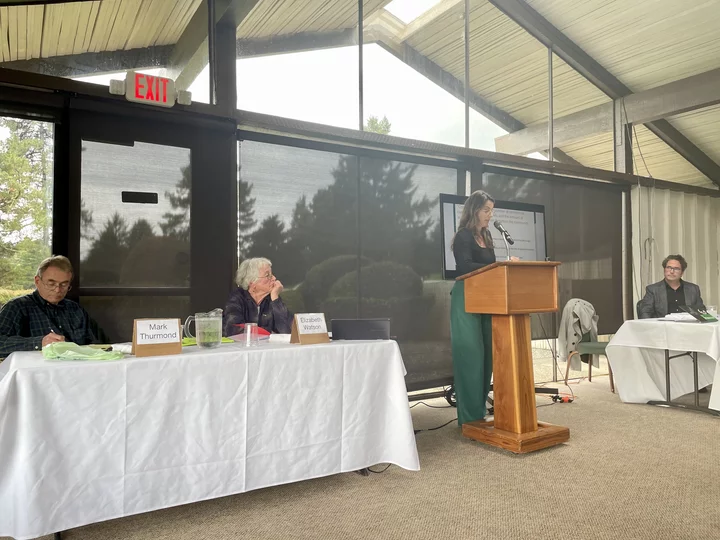
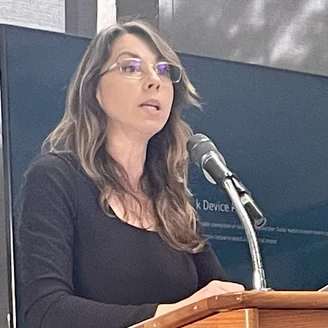
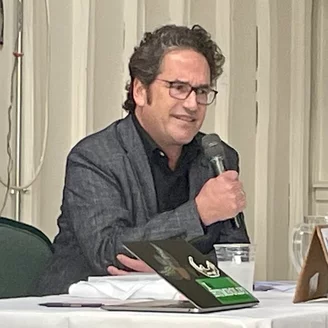
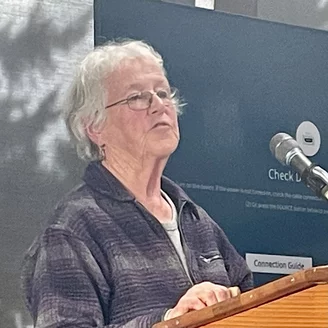
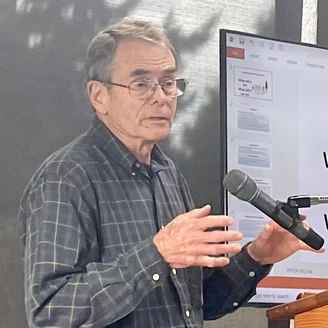
CLICK TO MANAGE